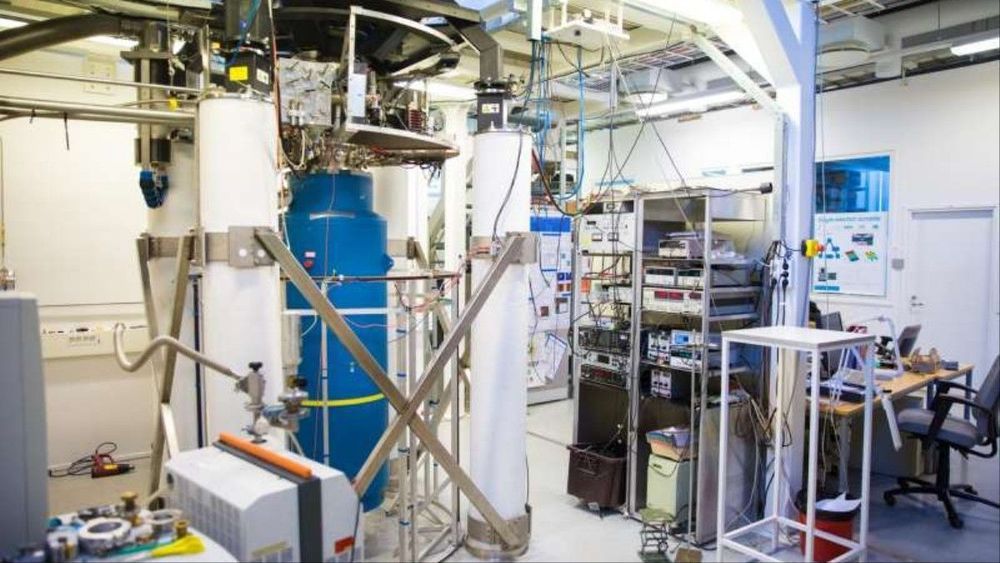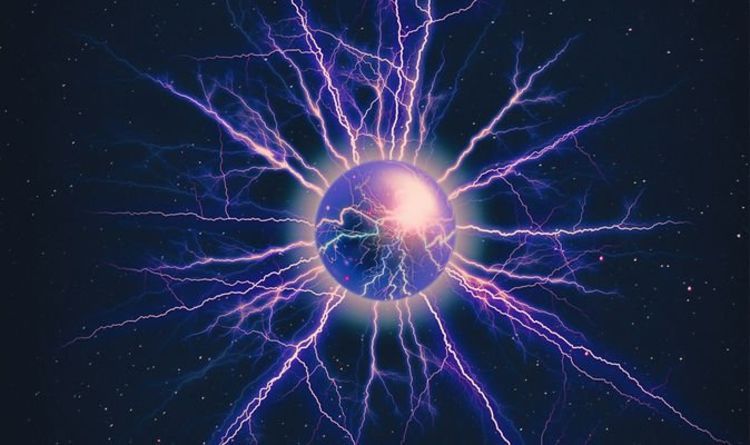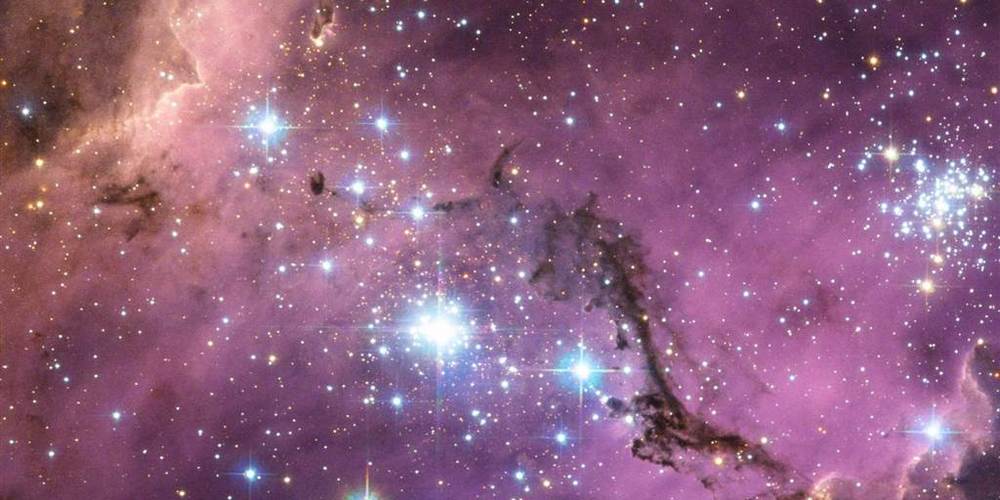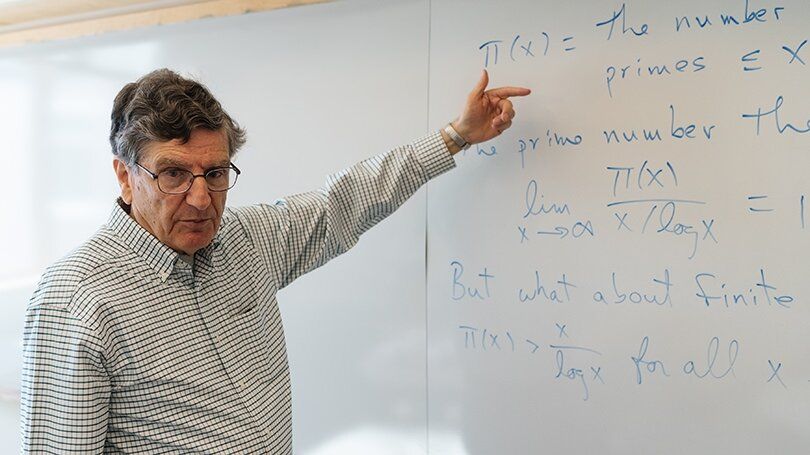Archive for the ‘cosmology’ category: Page 335
May 22, 2019
Tiny droplets of early universe matter created
Posted by Quinn Sena in categories: cosmology, particle physics
An international team of scientists has created tiny droplets of the ultra-hot matter that once filled the early universe, forming three distinct shapes and sizes: circles, ellipses and triangles.
The study, published December 10, 2018 in the peer-reviewed journal Nature Physics, focuses on a liquid-like state of matter called a quark gluon plasma. Physicists believe that this matter filled the entire universe during the first few microseconds after the Big Bang when the universe was still too hot for particles to come together to make atoms.
The researchers used a massive collider at Brookhaven National Laboratory in Upton, New York, to recreate that plasma. In a series of tests, the researchers smashed packets of protons and neutrons in different combinations into much bigger atomic nuclei. They discovered that by carefully controlling conditions, they could generate droplets of quark gluon plasma that expanded to form three different geometric patterns.
Continue reading “Tiny droplets of early universe matter created” »
May 21, 2019
Dark Matter BOMBSHELL: Could THIS theory explain mystery substance? ‘It explains it all’
Posted by Quinn Sena in categories: cosmology, particle physics
DARK matter binds together our galaxy and many others like it when though we cannot see it or directly detect it – but what if the dark matter mystery could be solved using black holes and subatomic particles known as axions?
May 20, 2019
Is dark matter made of axions? Black holes may reveal the answer
Posted by Genevieve Klien in categories: cosmology, evolution, particle physics
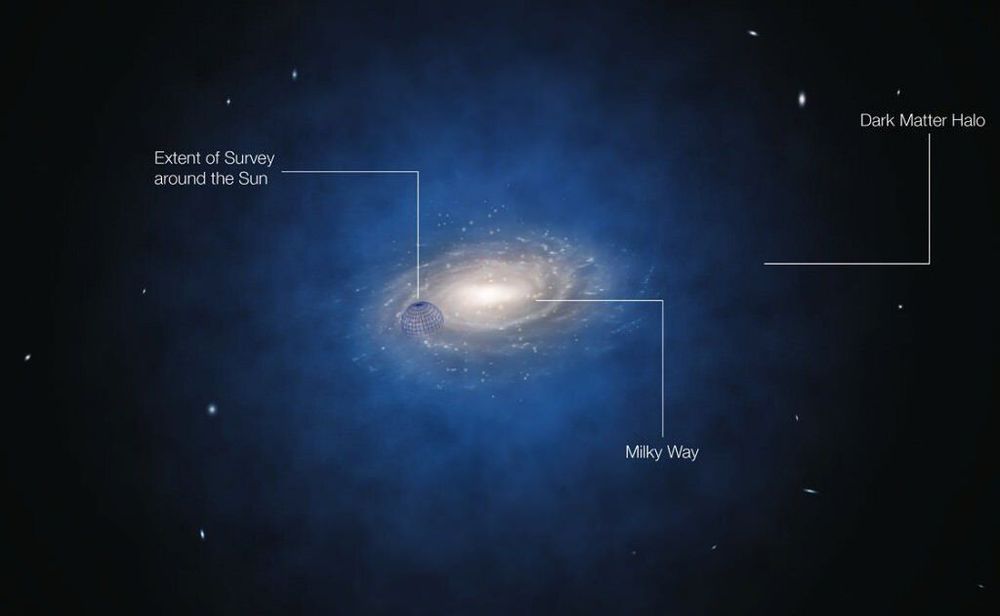
What is dark matter made of? It’s one of the most perplexing questions of modern astronomy. We know that dark matter is out there, since we can see its obvious gravitational influence on everything from galaxies to the evolution of the entire universe, but we don’t know what it is. Our best guess is that it’s some sort of weird new particle that doesn’t like to talk to normal matter very often (otherwise, we would have seen it by now). One possibility is that it’s an exotic hypothetical kind of particle known as an axion, and a team of astronomers are using none other than black holes to try to get a glimpse into this strange new cosmic critter.
Axion Agenda
Continue reading “Is dark matter made of axions? Black holes may reveal the answer” »
May 18, 2019
The universe may be a billion years younger than we thought. Scientists are scrambling to figure out why
Posted by Genevieve Klien in category: cosmology
New research suggests that the Big Bang that birthed the cosmos occurred 12.5 billion years ago.
The Large Magellanic Cloud, a satellite galaxy of the Milky Way, is nearly 200,000 light-years from Earth. ESA / Hubble / Josh Lake / via AFP — Getty Images.
May 18, 2019
Mapping historical changes in dark matter
Posted by Genevieve Klien in categories: cosmology, mapping
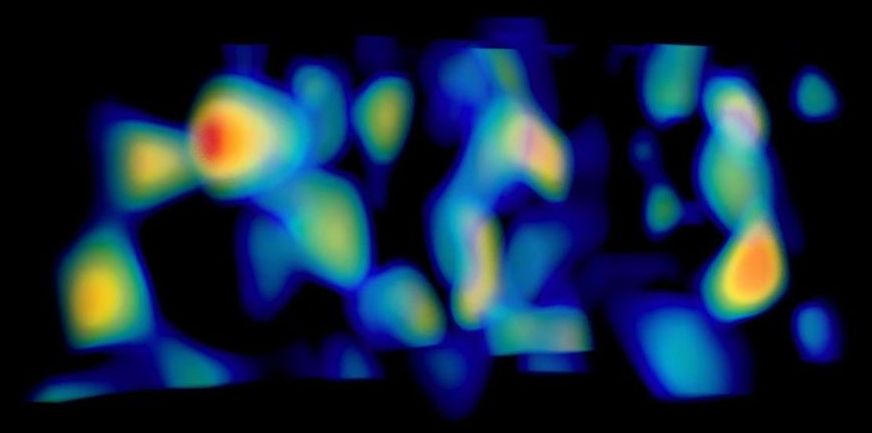
Combining Einstein’s theory of relativity with one of the most powerful telescopes in the world has helped an international team of researchers measure where and how dark matter structures grow in the universe. Their analysis suggests cosmic structures might be evolving more slowly than previously predicted.
May 17, 2019
‘The Big Bang Theory’ takes math notes from Carl Pomerance
Posted by Quinn Sena in categories: cosmology, information science, mathematics, quantum physics
A prime number theory equation by mathematics professor emeritus Carl Pomerance turned up on The Big Bang Theory, where it was scrawled on a white board in the background of the hit sitcom about a group of friends and roommates who are scientists, many of them physicists at the California Institute of Technology.
In a recent paper, “Proof of the Sheldon Conjecture,” Pomerance, the John G. Kemeny Parents Professor of Mathematics Emeritus, does the math on a claim by fictional quantum physicist Sheldon Cooper that 73 is “the best number” because of several unique properties. Pomerance’s proof shows that 73 is indeed unique.
The Big Bang Theory is known for dressing the set with “Easter eggs” to delight the self-avowed science nerds in the audience. When UCLA physics professor David Saltzberg, technical consultant for The Big Bang Theory, heard about the Sheldon proof, he contacted Pomerance to ask if they could use it in the show, which was broadcast April 18.
Continue reading “‘The Big Bang Theory’ takes math notes from Carl Pomerance” »
May 17, 2019
High School Student Uses AI to Detect Gravitational Waves
Posted by Quinn Sena in categories: cosmology, education, physics, robotics/AI, supercomputing
Before he could legally drive, high school student Adam Rebei was already submitting jobs on the Blue Waters supercomputer at the National Center for Supercomputing Applications at the University of Illinois at Urbana-Champaign (NCSA) to run complex simulations of black holes.
“My first time using Blue Waters, we did a tour first and got to see the computer, which is a very amazing thing because it’s a very powerful machine,” Rebei told the NCSA, “and I just remember thinking, ‘All of the GPUs!’ It’s an insane amount of GPUs, and I’ve never seen anything like it.”
To get there, Rebei first took an astronomy class that led him to his work with the NCSA. Once there, he teamed up with research scientist Eliu Huerta, who leads the group’s Gravity Group.
Continue reading “High School Student Uses AI to Detect Gravitational Waves” »
May 17, 2019
Did ‘The Big Bang Theory’ Get the Science Right? A Lesson in Supersymmetry and Economy Class
Posted by Quinn Sena in categories: cosmology, economics, physics, science
May 17, 2019
Quantum black hole study opens bridge to another universe
Posted by Quinn Sena in categories: cosmology, quantum physics
Circa 2013
Physicists have long thought that the singularities associated with gravity (like the inside of a black hole) should vanish in a quantum theory of gravity. It now appears that this may indeed be the case. Researchers in Uruguay and Louisiana have just published a description of a quantum black hole using loop quantum gravity in which the predictions of physics-ending singularities vanish, and are replaced by bridges to another universe.
